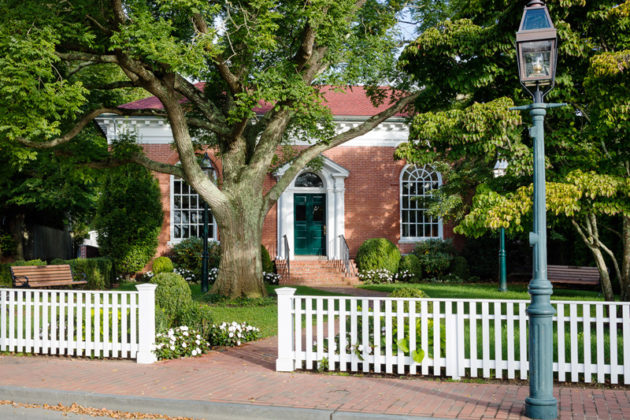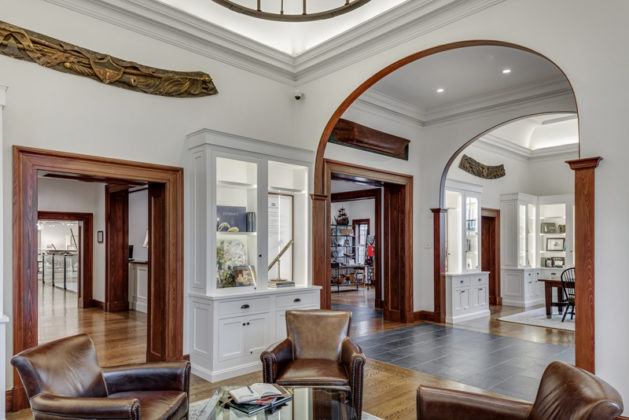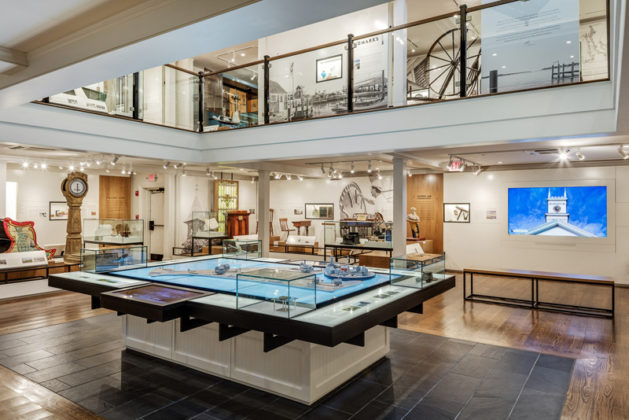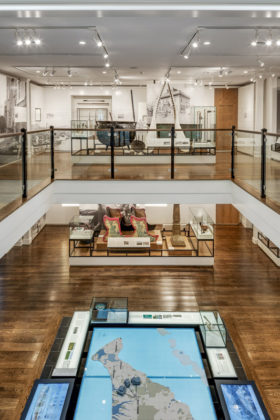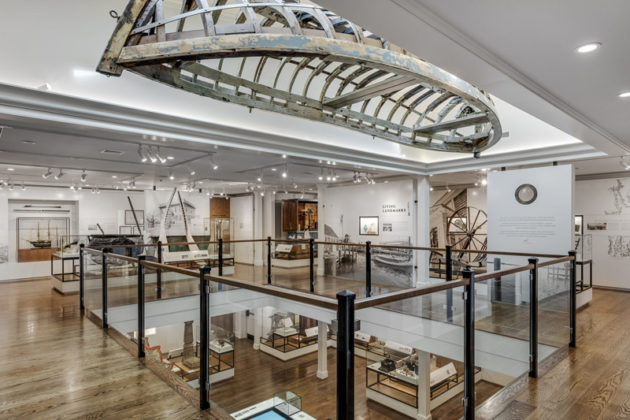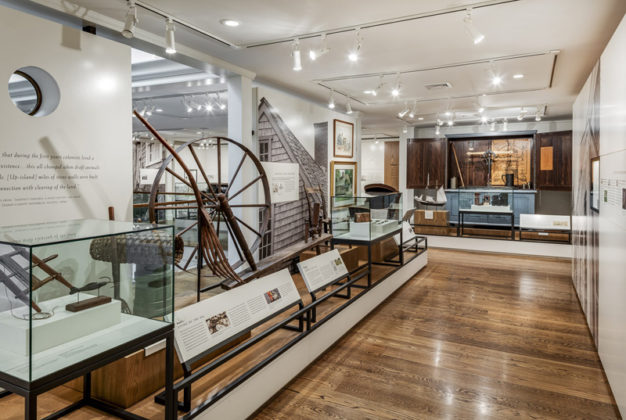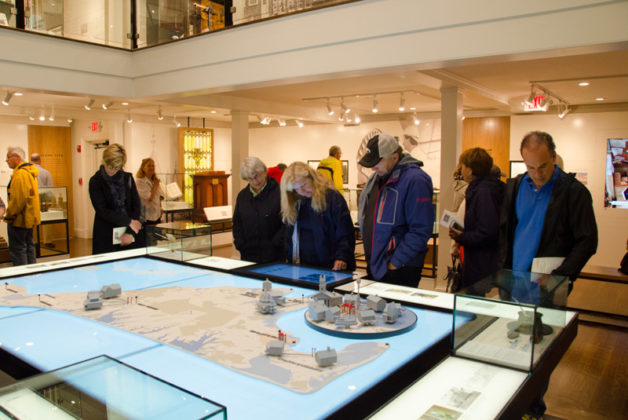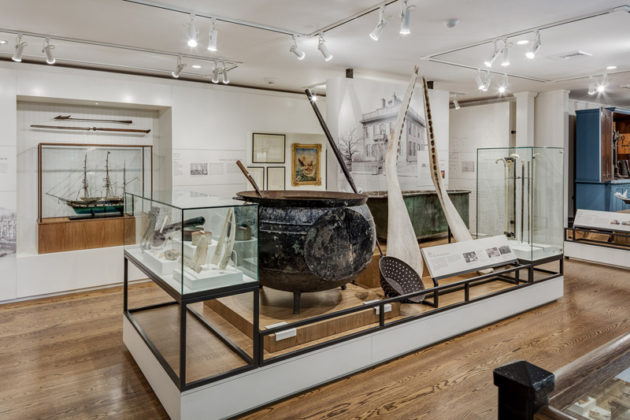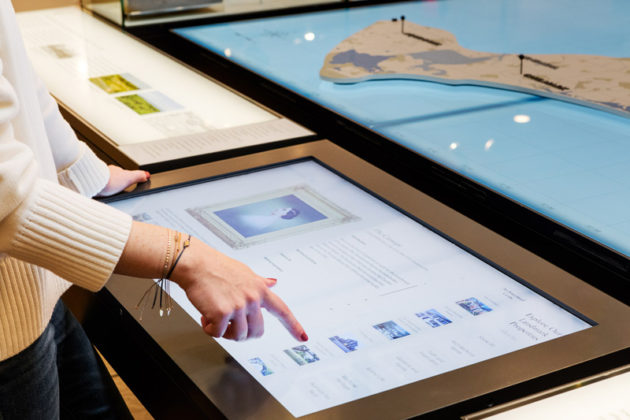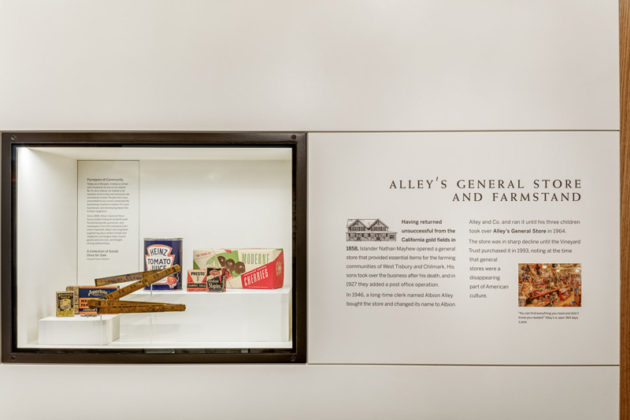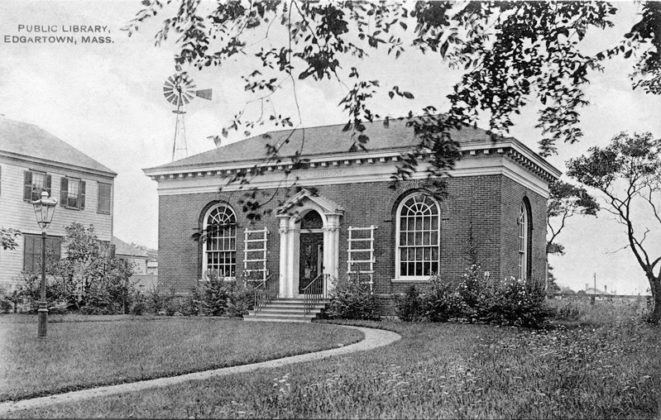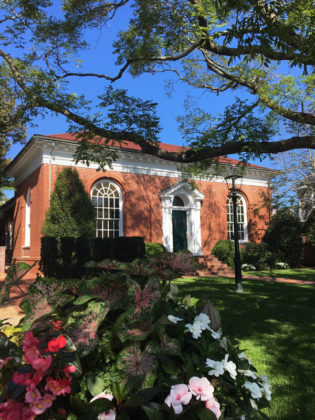
The humble red and brown brick façade of the Carnegie Heritage Center in Edgartown harks back to a day when Dr. Daniel Fisher and the Vincents were some of the wealthiest and most prominent entrepreneurs in America.
But the simple exterior is preserving a wealth of fascinating historic accounts, stories, artifacts, and characters, presented in a modern format, inside the living landmark museum established by the industrialist Andrew Carnegie. For anyone who wants to learn more about Edgartown and the rest of Martha’s Vineyard, but doesn’t want to comb through a dense history tome or go on a daylong tour, the Carnegie offers self-guided tours through the building, but also some comprehensive, hourlong walking tours.
Sissy Biggers, community engagement and tour director for the Carnegie, said she is excited to establish the landmark as the flagship building for the Vineyard Preservation Trust — the organization that stewards the building, along with a number of other historic buildings in Edgartown and on-Island.
“People walk by the building all the time and they look up and see ‘Carnegie,’ not really knowing what it is — of course, it was the library since 1904, and it was endowed by the industrialist Andrew Carnegie, along with 2,800 other Carnegie libraries around the world,” Biggers said. The quaint little brick building on North Water Street, directly adjacent to the line for the Chappy ferry, is the smallest of all the Carnegie buildings.
“The old building was sold to the Vineyard Preservation Trust for a dollar. Then the trust raised the money to create what is now known as the Carnegie Heritage Center,” Biggers said.
“It’s a wonderful place to start a visit to Edgartown, because you really get a sense of the history, but it’s also special because it’s through the lens of all the Preservation Trust buildings, which serve as living landmarks on the Island.”
Inside the Carnegie are exhibits largely centered around the development of maritime commerce that made Martha’s Vineyard what it is today. There are old scrimshaw, giant whale bones, whaling artifacts, and many other fascinating items to marvel at, but folks can also simply settle into a club chair with a good history book and sip some coffee.
“It’s really a great place to get your bearings and your footing when you are visiting Edgartown, before you venture out to explore,” Biggers said.
The hourlong walking tours offered by professional educators provide an extensive understanding of all the historic buildings stewarded by the trust in Edgartown, along with a generational account of the development of modern society on the Vineyard. The tours will be available Tuesdays through Saturdays, from 10 am to 4 pm. Biggers requests that people preregister if they wish to take a tour during that time slot, although there will usually be knowledgeable staff available to give tours at 11 am.
“We head down on the waterfront, up to the magnificent Old Whaling Church, to the Federalist jewel of the Dr. Daniel Fisher House, and to the Vincent House, which is purported to be the oldest house on the Island,” Biggers said. Additionally, folks will stop by the Old Sculpin Gallery, right by the water. Here, Manuel Swartz Roberts crafted his famous catboats while his family lived in the loft silo above the workshop — just another example of the fascinating maritime history here. Biggers noted that the Vincent House has rooms that each reflect a different era of the Vineyard: one room originally constructed in the 1600s, one representing the 1700s, and another representing the 1800s. “Each room reflects different periods during which this house existed,” Biggers explained. The hourlong tours cost $25.
Biggers said the interest in tours is already growing, and many preseason walks are already all booked up.
Even for locals who have lived in Edgartown all their lives, the extent of history contained along the waterfront is something that many may have no knowledge of. “I think people who live here might take it for granted a little bit, because they just see it every day. But when we send people out, even if they’re from here, they’re ready to learn, and are hungry for that rich context of Edgartown,” Biggers said.
Biggers serves as one of the educators who provide tours, along with educators with professional experience who worked at the Philip Johnson House and the Bush-Holley House in Connecticut, both of which are historic living landmarks. “These are really top-notch educators who have a great deal of experience conveying historic information in a fun and attention-grabbing way,” Biggers said.
Rachel Hines, program director and special events coordinator for the Carnegie, said she is most excited about the exhibits inside, because they will interest anyone who loves the Island — visitors and longtime residents alike. “Whether you are a tourist, a local, or someone who comes here every summer and you’ve just never been inside, step one foot inside and I bet you’ll be wanting to learn more and more about this amazing place,” Hines said.
Hines listed some of the various exhibits inside the living landmark museum, like a brick that was found belonging to the original foundation of the Vincent House, dating back to 1672. A massive cauldron greets guests in one of the exhibit spaces — a vestige of the whaling industry used to boil down whale fat and blubber to make ambergris and whale oil for lanterns. “There are also some jawbones from whales, and a lot of scrimshaw engraved in bone and ivory from whales,” Hines said.
Visitors to the Carnegie can head downstairs and view an interactive map which diagrams the entire Island, along with each of the historic buildings under the auspices of the trust. Simply swipe through the computer to see each building individually, and how they influenced the trajectory of the community.
“We highlight the Flying Horses Carousel, which is another example of the trust maintaining an architectural history. We have this really cool old bench from the original Flying Horses, before it came to the Island from New York on a big barge,” Hines said.
One of Hines’ main goals is to instill a sense of importance surrounding maintaining and preserving these historical landmarks, in order to keep the stories that stitch together the chronicle of the Island alive and in the open.
“We want to make sure that people understand how essential it is to keep these buildings up, and to continue providing maintenance, but also education, around why we want to preserve and celebrate these wonderful places,” Hines said.
The Carnegie Heritage Center will be open Tuesdays through Saturdays, from 10 am to 4 pm, for walking tours and tours of the center. Visit vineyardtrust.org/property/the-carnegie for more information, or call 508–627–4440.

